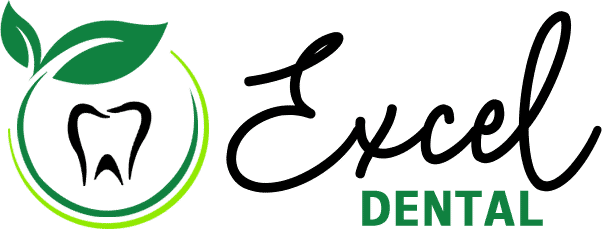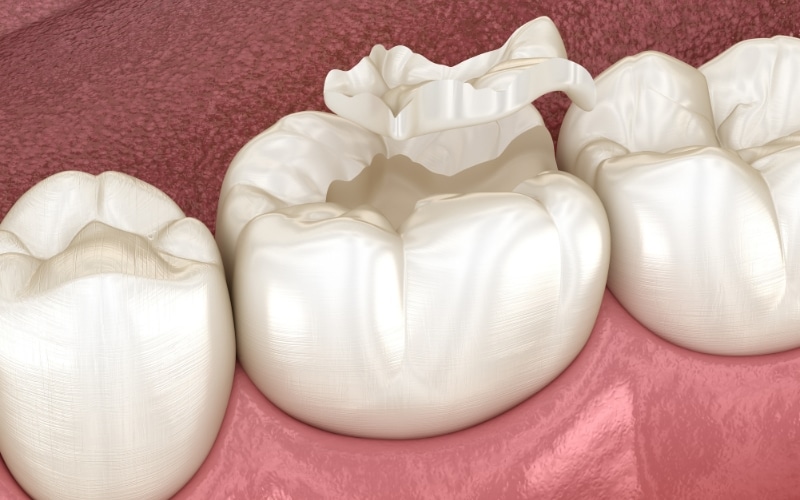Halloween and the holiday season bring endless treats, but hard candy and sticky sweets can sometimes lead to an unpleasant surprise: a cracked tooth. A cracked or fractured tooth can be both painful and alarming, but thankfully, emergency dentistry can provide relief and restore your smile.
This blog will discuss the risks associated with hard and sticky candies, the signs of a cracked tooth, and how emergency dentistry can help you find prompt solutions.
The Potential Risks: How Candy Can Crack Your Tooth?
Candies are fun treats, but they can be hard on your teeth. Here’s how different types of candy can lead to dental damage:
- Hard Candies: Hard candies, like jawbreakers or lollipops, are notorious for causing cracks. Biting down on them can easily put excessive pressure on the enamel, which can cause it to fracture.
- Sticky and Chewy Candies: Caramel, taffy, and gummy candies are delicious but can pull at teeth, especially those that may already have hairline fractures or weakened enamel. These treats can get stuck between teeth, increasing the risk of cracking when trying to dislodge them.
- Nuts and Chocolate Combinations: While softer than hard candy, nut-filled chocolates or brittle can still exert pressure on your teeth, increasing the chance of cracking. Emergency dentistry services can help address the issue quickly.
Signs You May Have Cracked Your Tooth
Recognizing a cracked tooth early is essential for effective treatment. Here are some symptoms that may indicate a cracked or fractured tooth:
- Sharp Pain When Biting: If you feel a sudden, sharp pain while biting down or releasing your bite, it could indicate a crack in your tooth.
- Sensitivity to Temperature: Cracked teeth often react strongly to hot or cold drinks since the damage allows temperature changes to impact the sensitive inner layers of the tooth. As a result, even mild temperature fluctuations can cause discomfort or sharp pain.
- Lingering Pain: While you might not feel pain consistently, you may notice discomfort that comes and goes, especially after chewing or exposure to certain foods.
- Swelling Around the Gum Line: If the crack reaches beneath the gum line, you may notice slight swelling or irritation around the area of the damaged tooth.
- Discomfort When Chewing: If chewing triggers pain or an odd sensation, it might be due to a tooth fracture.
Why Seek Emergency Dentistry?
A cracked tooth is not something you should ignore, as it can worsen over time. Emergency dentistry provides prompt treatment to prevent further complications and alleviate pain. Here are some reasons why emergency dental care is crucial for a cracked tooth:
- Immediate Pain Relief: Cracked teeth can be incredibly painful, and emergency dentists can help reduce discomfort and manage the pain quickly.
- Prevention of Infection: A crack in the tooth creates an entryway for bacteria, increasing the risk of infection and complications like abscesses.
- Restore Tooth Functionality: Emergency treatment can prevent further damage, allowing you to chew and eat comfortably without risking additional harm.
- Avoid More Extensive Procedures: Addressing a crack early through emergency care can prevent the need for more invasive treatments, like root canals or extractions, in the future.
Emergency Dental Treatment Options for a Cracked Tooth
Depending on the severity of the crack, emergency dentists have a range of options to treat the problem. Here are some common treatments:
1. Dental Crowns
If the crack is larger or the tooth is weakened, a dental crown might be recommended. Crowns cover the entire surface of the tooth, protecting it from further damage and allowing you to use it as normal. Emergency dentists often use temporary crowns until a permanent one can be created.
2. Root Canal Therapy
In cases where the crack extends into the pulp (the inner layer containing nerves), root canal therapy may be necessary. Specifically, this procedure removes the damaged or infected pulp, cleans the canal, and seals it. Afterward, a crown is often placed to provide added protection and restore the tooth’s strength. Consequently, this treatment helps prevent further damage and alleviates discomfort caused by the crack.
3. Tooth Extraction
In severe cases where the tooth is too damaged to save, extraction might be the only option. Emergency dentists can extract the tooth and discuss options for tooth replacement, such as dental implants, bridges, or partial dentures, to restore your smile.
Tips To Manage a Cracked Tooth Before You See The Dentist
If you suspect a cracked tooth but can’t get to the dentist immediately, here are some steps you can take to minimize pain and protect the tooth:
- Avoid Hard and Chewy Foods: Stick to soft foods until you receive dental care to prevent the crack from getting worse.
- Use a Cold Compress: Apply a cold compress to your cheek to reduce swelling and numb the pain.
- Rinse with Warm Salt Water: Saltwater can help reduce inflammation and cleanse the area.
- Over-the-Counter Pain Relievers: Non-prescription pain relievers like ibuprofen can help manage discomfort, but avoid applying aspirin directly to the gums, as it can cause irritation.
- Dental Wax or Sugar-Free Gum: If the cracked tooth has sharp edges, covering it with dental wax or sugar-free gum can protect your tongue and other soft tissues until you see the dentist.
Prevent Cracked Teeth In the Future
Taking preventative measures can help you enjoy candy without risking your teeth. Here are some tips to avoid future dental issues:
- Avoid Biting Hard Candy: Let hard candies dissolve in your mouth instead of biting them to reduce the chance of cracking your teeth.
- Limit Sticky Sweets: Sticky candies are not only difficult to clean from teeth but also increase the risk of damage. Consider enjoying these in moderation.
- Practice Good Oral Hygiene: Brush and floss regularly to maintain strong teeth that are less prone to cracking.
- Schedule Regular Checkups: Routine dental visits allow our dentist to identify early signs of cracks or weakened enamel, preventing issues before they arise.
- Wear a Mouthguard: If you grind your teeth at night, wearing a mouthguard can protect your teeth from fractures and other damage.
A cracked tooth from Halloween treats may seem like a small inconvenience, but it’s essential to address the issue quickly. Emergency dentistry offers a range of solutions to treat cracked teeth, relieve pain, and ultimately prevent further damage. In addition, prompt treatment can help avoid more serious complications down the road, ensuring your smile stays intact and healthy.
This Halloween, don’t let a cracked tooth haunt your smile. Take precautions, and if an accident happens, seek emergency dental care to get your smile back in shape. Protect your teeth, stay cautious, and enjoy the treats with peace of mind!

